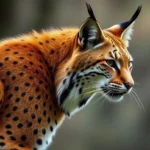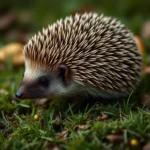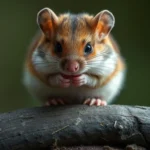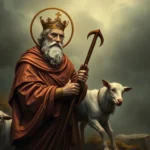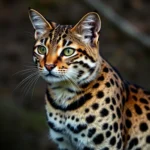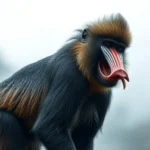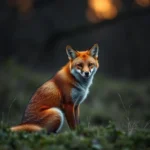Kinkajou: The Playful Spirit of the Rainforest
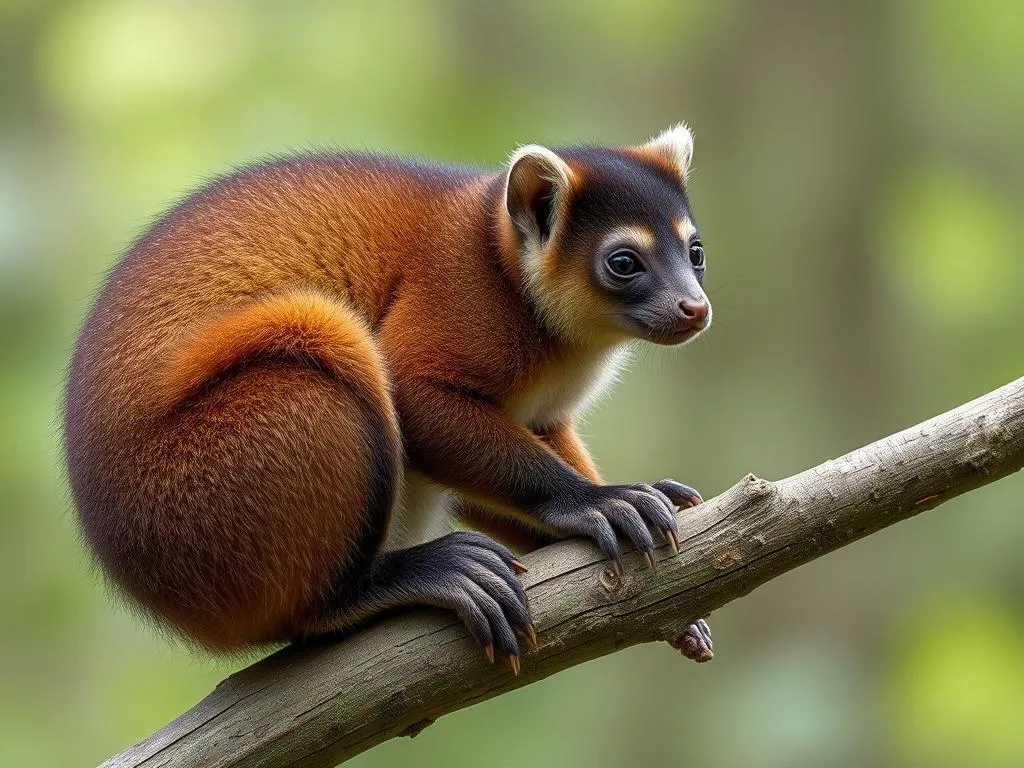
Disclaimer: Some images on this website are AI-generated artworks and may not accurately represent real animals.
The kinkajou, a small mammal native to Central and South America, holds a unique place in the hearts of many who admire its playful nature and striking appearance. This fascinating creature embodies a rich tapestry of kinkajou symbolism and meaning, making it a subject of interest not only for animal lovers but also for those curious about its spiritual significance.
Understanding the Kinkajou
Taxonomy and Habitat
The kinkajou (Potos flavus) belongs to the family Procyonidae, which also includes raccoons and coatis. This nocturnal mammal primarily inhabits the tropical rainforests of Central and South America, from Honduras to the Amazon Basin. Preferring dense foliage, kinkajous thrive in humid environments where they can easily access fruits, nectar, and insects, their primary food sources.
Physical Characteristics
Kinkajous are known for their unique physical features that contribute to their playful demeanor. Below is a table summarizing some of their most notable characteristics:
| Feature | Description |
|---|---|
| Size | Approximately 24 to 30 inches long |
| Weight | 5 to 10 pounds |
| Fur | Soft, dense, and typically brownish |
| Eyes | Large and forward-facing |
| Tail | Prehensile, about the same length as body |
| Limbs | Strong, with dexterous grasping ability |
Their large, expressive eyes are not only charming but also enhance their night vision, allowing them to navigate the forest under the cover of darkness. The kinkajou’s prehensile tail acts as an additional limb, aiding in balance and grasping branches as they move through the trees.
Behavioral Traits
Kinkajous are primarily nocturnal, showcasing their playful nature during the night. They are social animals, often found in small groups that foster camaraderie. Their playful disposition is evident in their playful chases and acrobatics among the branches, reminiscent of a child at play. Kinkajous communicate with a range of vocalizations, including whistles and barks, which further emphasizes their social nature.
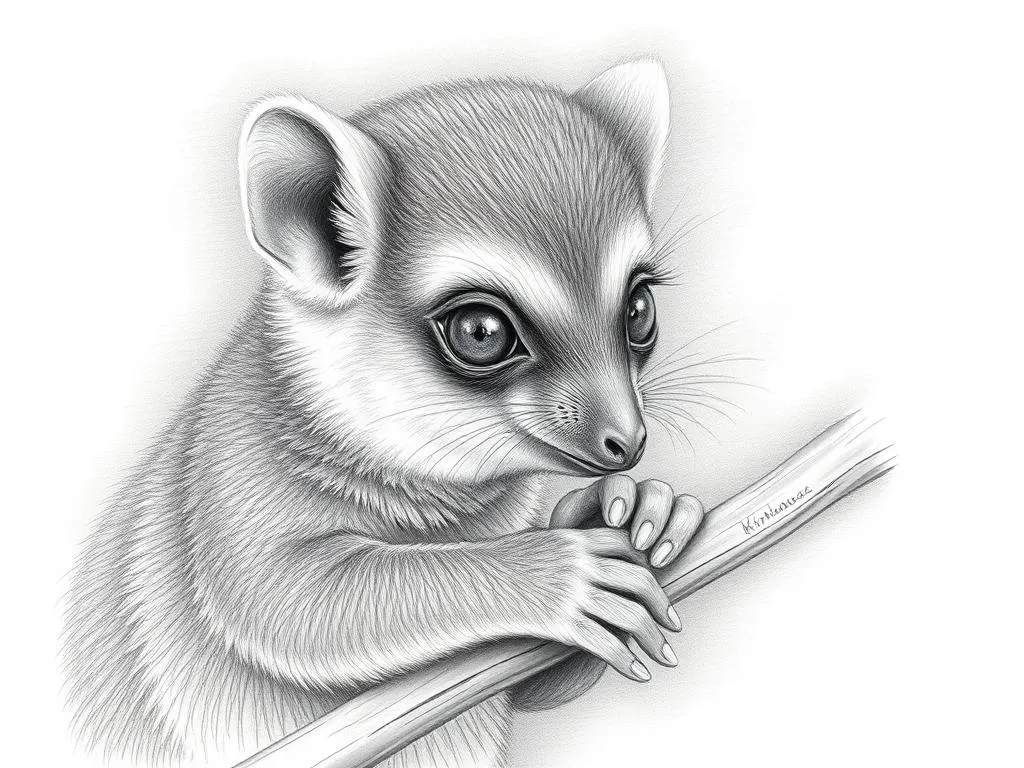
Symbolism & Spiritual Meaning
Playfulness and Joy
The kinkajou symbolism and meaning largely revolve around themes of joy and playfulness. These creatures remind us of the importance of embracing fun and light-heartedness in our lives. Their lively antics in the rainforest not only entertain but also inspire us to seek joy in the small moments.
Connection to Nature
Kinkajous play a vital role in their ecosystems, aiding in seed dispersal and pollination. This connection to nature signifies the importance of ecological balance and harmony. They are a reminder of our interconnectedness with the natural world, urging us to respect and protect our environments.
Adaptability and Resilience
Kinkajous are known for their adaptability, thriving in various habitats, from dense jungles to more fragmented landscapes. This ability to adjust to changing conditions serves as a powerful lesson in resilience. Embracing the kinkajou symbolism and meaning can inspire individuals to adapt to life’s challenges with grace and flexibility.
Kinkajou in Dreams
Interpreting Kinkajou Appearances
When a kinkajou appears in your dreams, it often symbolizes the need for playfulness and exploration in your waking life. It may suggest that you should reconnect with your childlike wonder and curiosity or that it’s time to let go of stress and embrace joy.
Dream Themes of Freedom and Exploration
The presence of a kinkajou in dreams can also be associated with themes of freedom and adventure. Below is a table illustrating related dream interpretations:
| Symbolic Element | Interpretation |
|---|---|
| Kinkajou | Playfulness, curiosity |
| Trees | Growth, new opportunities |
| Nighttime | Hidden aspects of self, intuition |
| Fruits | Abundance, nourishment |
These interpretations highlight the importance of adventure and curiosity, encouraging dreamers to explore new horizons and embrace the unknown with an open heart.
Modern Interpretations
Cultural Significance
Different cultures have varying perspectives on kinkajous. In some indigenous cultures, they are seen as symbols of joy and community, embodying the spirit of the rainforest. This cultural significance reinforces the themes of interconnectedness and the celebration of life.
Kinkajous in Popular Culture
Kinkajous have made their mark in literature, art, and media. Often depicted as whimsical and playful creatures, they serve as reminders to embrace our playful side. From children’s books to animated films, kinkajous represent joy, adventure, and the beauty of nature.
Conservation and Spiritual Awareness
As awareness of environmental issues grows, the kinkajou has become a symbol for conservation efforts. The plight of these animals in the face of habitat destruction underscores the need for spiritual awareness regarding our impact on the planet. Embracing the kinkajou symbolism and meaning encourages a deeper connection to nature and an understanding of our responsibilities as stewards of the Earth.
Key Takeaways
- Kinkajous embody playfulness and joy, reminding us to find fun in everyday life.
- They represent a connection to nature, highlighting the importance of ecological balance.
- Their adaptability and resilience provide valuable lessons in facing life’s challenges.
- Kinkajous serve as symbols of freedom and exploration, encouraging curiosity and adventure.
- They carry cultural significance across various societies, celebrating community and interconnectedness.
Embracing the energy of kinkajous can enhance personal growth and deepen our connection to the natural world.
Conclusion
The kinkajou, with its playful spirit and striking characteristics, captures the essence of joy, adaptability, and connection to nature. Through the lens of kinkajou symbolism and meaning, we are reminded of the importance of embracing our playful side and nurturing our bond with the environment. As we navigate the complexities of life, let us take inspiration from this remarkable creature, celebrating the moments of joy and resilience that define our journey. The kinkajou stands as a testament to the beauty of the animal kingdom and the profound lessons it offers us.
